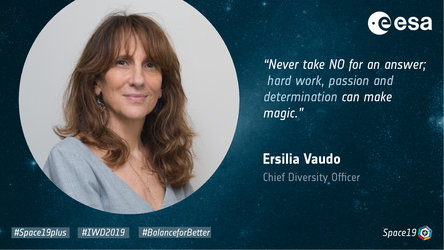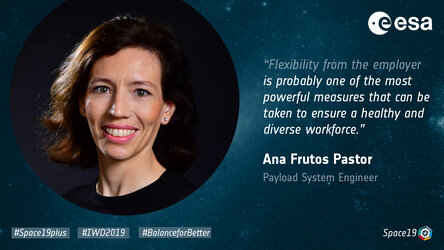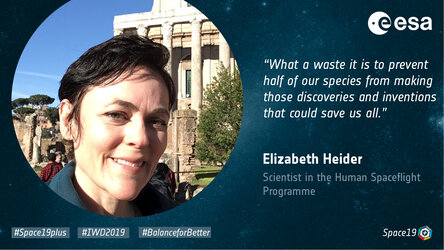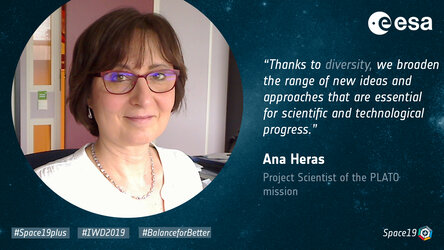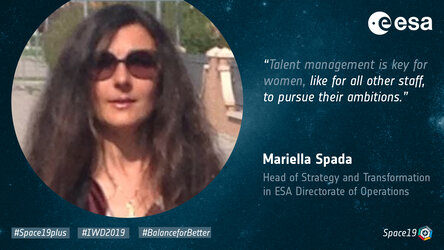Mariella Spada, Head of Strategy and Transformation, ESA Directorate of Operations
Please give a brief description of your duties at ESA.
I am Head of Strategy and Transformation in the ESA Directorate of Operations. My job is to drive the strategic agenda of my directorate, pulling together our staff energies and amazing talent towards sustainable change in order to successfully address present and future challenges, stay at the forefront of innovation, and to enable European competitiveness in satellite operations and space safety.
What inspired you to pursue a career in science and engineering and what motivated you to join ESA specifically?
In the mid-1980s, computer science was an emerging discipline. At high school, I studied the classics: literature, Latin and ancient Greek without, however, neglecting maths and science. Generally, I had good marks in all disciplines but when it came to choosing a degree course, I decided on computer science as it promised a good mix of technical challenges and job opportunities. Space was not at all on my agenda until the day I read an advertisement for ESA Young Graduate Trainee (YGT) positions in a magazine targeted at students. However, like most of us working in this field, during my time as a YGT I soon became fascinated with space to the point that I decided to return to ESA as soon as the opportunity arose. What makes this world special is the passion that drives people at all levels, generates a strong sense of belonging to ESA and creates an amazing joint endeavour.
Did you encounter gender barriers on your way to becoming a scientist / engineer?
I have never felt discriminated against or seen myself as a victim of prejudice. At work, I am a professional who tries to give her best to the Agency, just like everyone else. That being said, the demands of society on women are high when it comes to balancing a rich professional life with commitments as a mother. However, I do not consider this an obstacle but rather one more challenge to be managed. The support of your organisation to strike a work-life balance is vital, although hard work and sacrifices are unavoidable.
What progress have you seen in addressing the gender imbalance in your profession through equal-opportunity measures in recent years?
ESA has taken measures in the right direction, like introducing more flexibility with teleworking and flexible working hours. Nevertheless, I believe in inspired leaders who recognise the value of diversity for the business and their organisation as a whole, making the real leap possible. I have been very fortunate to come across such leaders during my career, especially the first manager who gave me the chance to take a line management position when I was still pretty young. Another example is my current boss, the ESA Director of Operations, who has introduced me to the leadership arena and has been my greatest coach.
What are, in your view, three measures that could make a difference in supporting a work-life balance and at the same time equal career opportunities.
Total physical and time flexibility: in our fully interconnected world we can be online always and from wherever. Talent management for all staff is also key – this helps women to pursue their ambitions, like all other staff. Last but not least, presenting a strong business case for diversity at ESA, illustrating how diversity is essential to achieving the ESA mandate. In simple terms, demonstrating how a lack of diversity can impact business.
What advice would you give to a girl or young woman who is considering a career in science and engineering?
I would simply say ‘Go for it!’ Science and engineering offer immense opportunities, which will grow dramatically in the future. By working in science or engineering, you will be best positioned to contribute to changing the world for the better. This is the most noble goal for humanity.



